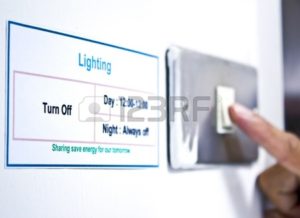 It is so simple really, just turn the switch off! Run appliances such as washing machines and dryers at low peak times when energy is charged at it’s lowest levels. Turn down your thermostat to conserve energy in the winter time, Turn it up in the summer to reduce your overall energy consumption. There are probably a 100 little things that can be done if you make them into a habit. They will save you money and reduce energy consumption. Just take a look around your home. Anything that uses energy in any form is a candidate to be turned off. It will help reduce energy consumption and put money in your pocket.
It is so simple really, just turn the switch off! Run appliances such as washing machines and dryers at low peak times when energy is charged at it’s lowest levels. Turn down your thermostat to conserve energy in the winter time, Turn it up in the summer to reduce your overall energy consumption. There are probably a 100 little things that can be done if you make them into a habit. They will save you money and reduce energy consumption. Just take a look around your home. Anything that uses energy in any form is a candidate to be turned off. It will help reduce energy consumption and put money in your pocket.
When we started thinking about this around our own home we went for the obvious. Also the biggest contributors first. These were the lights of course. We turned them off if not in the room and we also converted from incandescent to fluorescent light bulbs which made a huge savings. Now you can convert to LED’s which save even more money. We are just waiting for the fluorescent we have to burn out. They have such a long life span, this might take a while and the LED’s last even longer.
Reduce Energy Consumption by Time of Day
We are on time of day billing for our energy consumption. Basically the electrical energy rates cost much less in the evenings and are much higher in the daytime. We run dishwashers, washing machines and dryers after 7pm at night to take advantage of the lower energy rates in the evenings. We also have a pool so I installed a timer on the pool pump so that it runs only in the evenings. There has been no problem with algae or anything like that and the energy savings paid for the timer in the first year of operation.
Turning off other appliances when not in use such as TV’s and radios save small amounts. It is more a mindset than anything else once you have the big users of energy under control. Don’t forget that when you go away for the holidays to unplug everything before you leave to reduce your energy foot print to as small as possible.